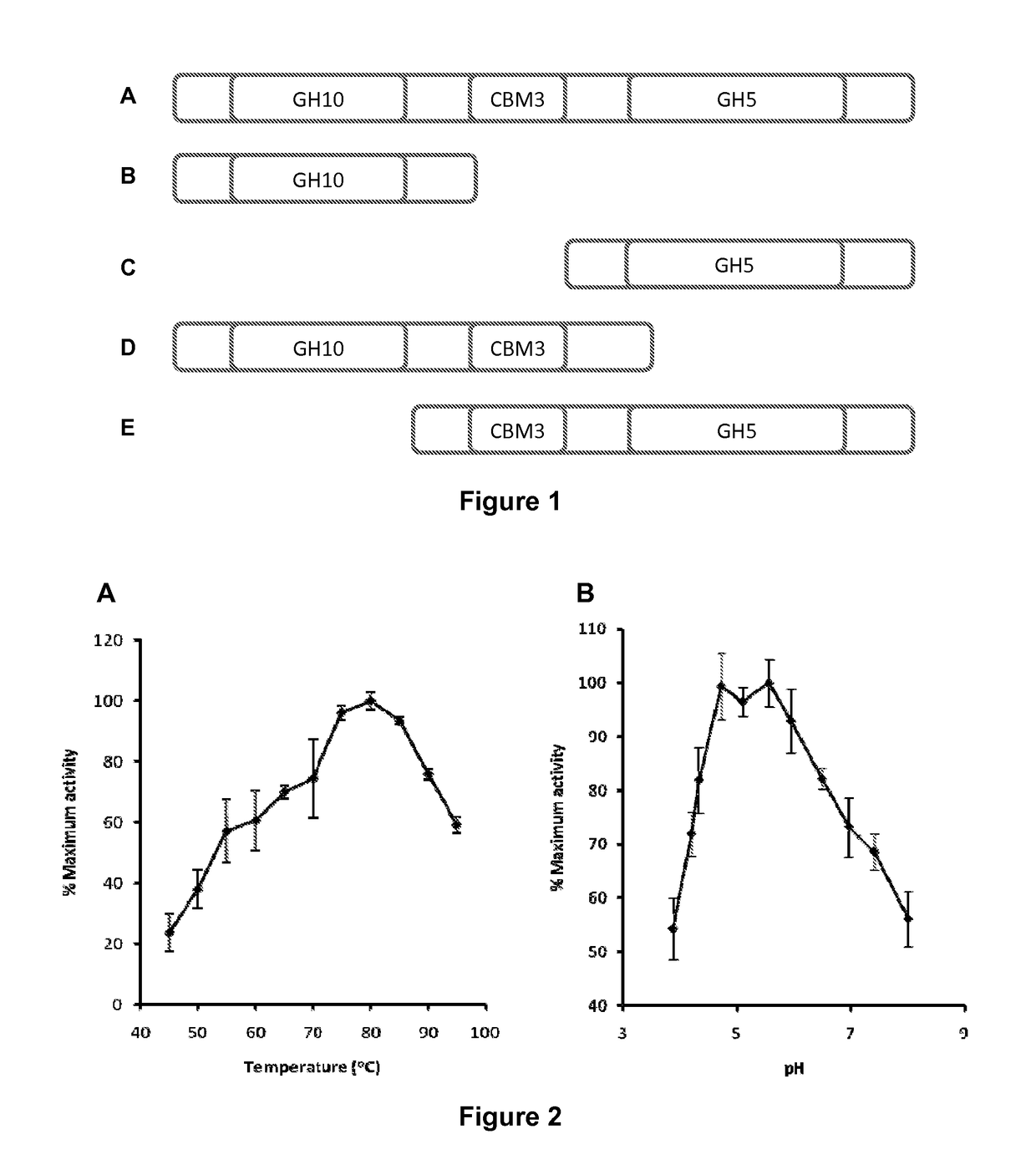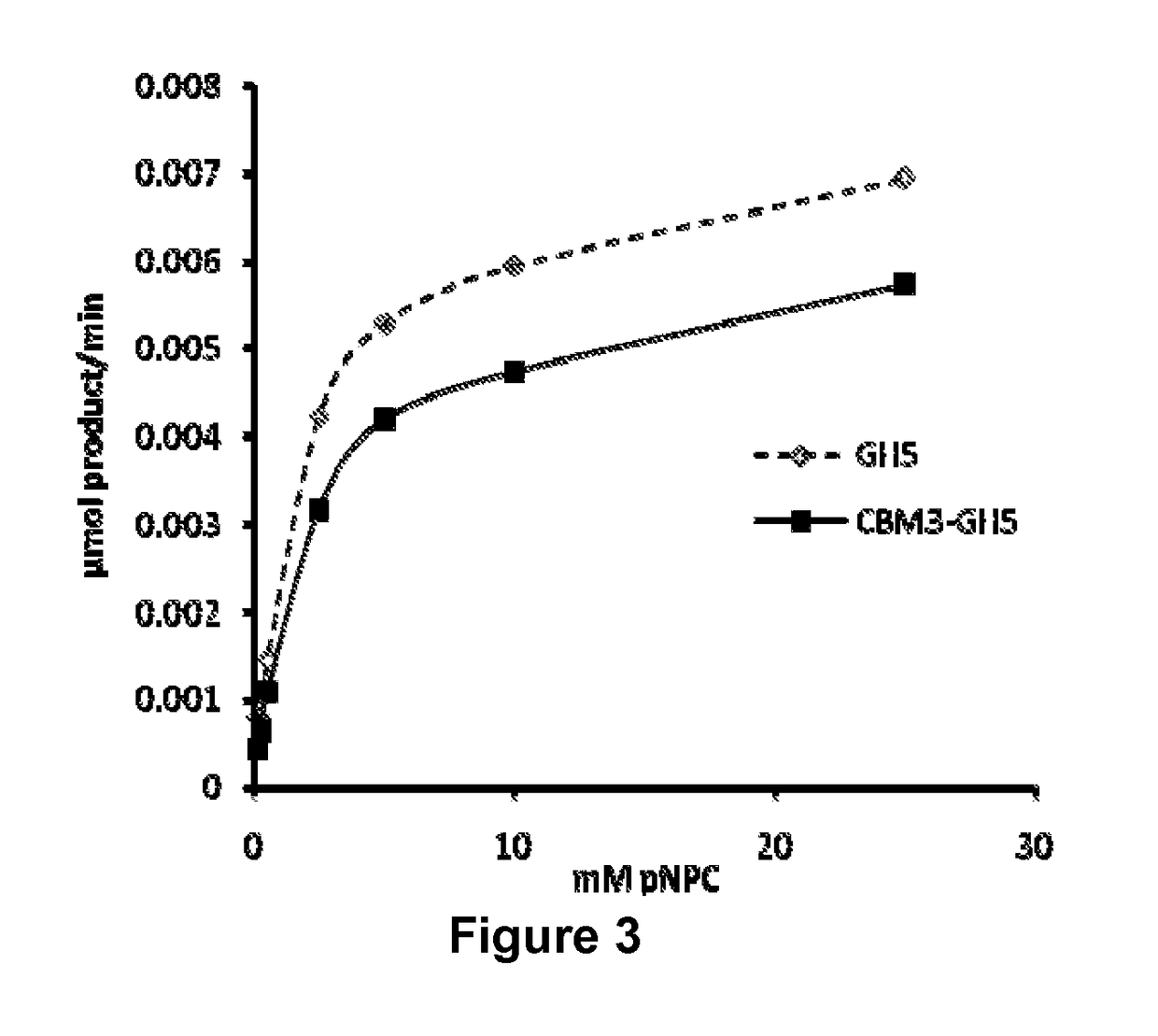Thermophilic cellobiohydrolase
a cellobiohydrolase and thermophilic technology, applied in hydrolases, biochemistry apparatus and processes, enzymes, etc., can solve the problems of unfavorable single pretreatment and saccharification method, unfavorable byproducts, and high energy and cos
- Summary
- Abstract
- Description
- Claims
- Application Information
AI Technical Summary
Problems solved by technology
Method used
Image
Examples
example 1
A Hyperthermophilic Cellobiohydrolase from Caldicellulosiruptor saccharolyticus
[0062]CBH is a modular cellulolytic gene from a hyperthermophilic and anaerobic bacterium Caldicellulosiruptor saccharolyticus (C. Sac), which contains the glycoside hydrolase family 10 (GH10), carbohydrate binding module family 3 (CBM3), and glycoside hydrolase family 5 (GH5) domains in a single open reading frame (ORF). We have expressed, purified, and characterized the function of the recombinant GH5 with and without CBM3 domain. The nucleotide sequence of the ORF is codon-optimized and then synthesized for protein expression in E. coli. The translated products contain c-terminal V5 epitope and His (×6) tags from the pDEST42 vector sequence. The recombinant proteins CBM3-GH5 and GH5 are expressed in BL21(DE3)Star E. coli and purified by affinity (HisTrap FF) and ion-exchange (HiTrap Q) chromatography methods. The average yields are 4 mg and 3 mg per liter, respectively. The result of the analysis is s...
PUM
| Property | Measurement | Unit |
|---|---|---|
| temperature | aaaaa | aaaaa |
| temperature | aaaaa | aaaaa |
| pH | aaaaa | aaaaa |
Abstract
Description
Claims
Application Information
 Login to View More
Login to View More - R&D
- Intellectual Property
- Life Sciences
- Materials
- Tech Scout
- Unparalleled Data Quality
- Higher Quality Content
- 60% Fewer Hallucinations
Browse by: Latest US Patents, China's latest patents, Technical Efficacy Thesaurus, Application Domain, Technology Topic, Popular Technical Reports.
© 2025 PatSnap. All rights reserved.Legal|Privacy policy|Modern Slavery Act Transparency Statement|Sitemap|About US| Contact US: help@patsnap.com



